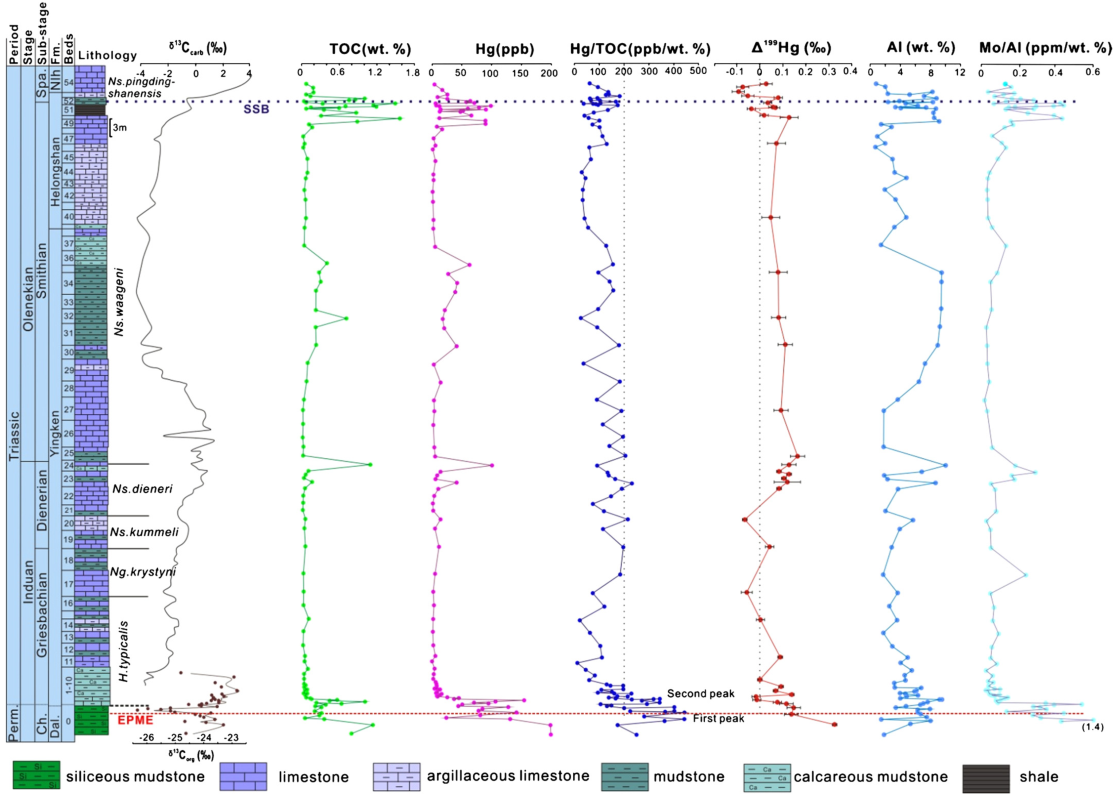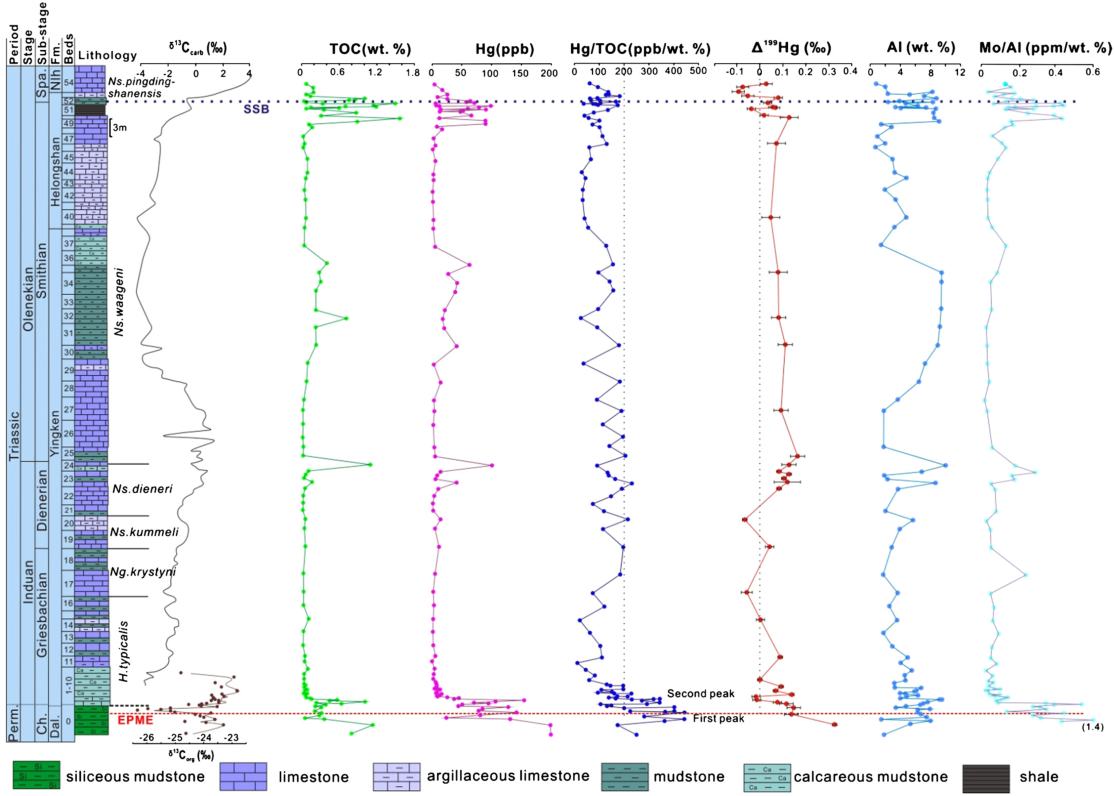Chinese scientists make important progress on study of the relationship between volcanism and the end-Permian mass extinction
Supported in part by the National Natural Science Foundation of China (No. 41673011, 41473006 and 41272025), a research group, led by Profs. Laishi Zhao and Zhongqiang Chen from China University of Geosciences (Wuhan), has achieved significant progress on study of the relationship between volcanism and the end-Permian mass extinction and subsequent Early Triassic recovery. This study, titled by "Global Mercury Cycle during the End-Permian Mass Extinction and Subsequent Early Triassic Recovery", has been published in Earth and Planetary Science Letters on 1st May 2019 (https://doi.org/10.1016/j.epsl.2019.02.026).
The end-Permian mass extinction (EPME) at ∼252 Ma was the most severe extinction in the Phanerozoic, accompanied by the devastation of environment and climate. While the synchronous Siberian Traps large igneous province (STLIP) has been proposed as the driver of the EPME, controversy remains as to the details of the relationship between the STLIP and the EPME, largely due to the lack of direct and effective geochemistry evidence. Additionally, whether there is a link between the EPME and the protracted Early Triassic recovery is still unknown.
To investigate the remaining problems, the research group examined several Permian-Triassic stratigraphic sections from China and India, using Hg concentration and isotopic composition data to track the STLIP records. The results show that there was a global Hg spike recorded in sediments at the end-Permian mass extinction horizon (Figs. 1 and 2). The Hg isotopic composition data, consistent with this Hg spike, show an atmospheric-derived signature of volcanic Hg. These results demonstrate that the STLIP had global impact, including Hg injection into the atmosphere and the subsequent inter-hemispheric transport and mixing. By contrast, the Hg values are low during the Early Triassic, implying that the STLIP did not perturb the global Hg cycle during the Early Triassic recovery. This work not only verified the relationship between the STLIP and the EPME and subsequent Early Triassic recovery, but also showed great potential of using Hg concentration and isotopic composition data to study paleoenvironment and paleoclimate.

Figure 1. Lithologies, conodont zones, carbon isotopic compositions, TOC contents, Hg concentrations, Hg isotopic compositions, clay mineral input index (Al contents) and ocean redox condition index (Mo/Al ratios) at the Chaohu section.

Figure 2. Lithologies, conodont zones, carbon isotopic compositions, TOC contents, Hg concentrations, Hg isotopic compositions, clay mineral input index (Al contents) and ocean redox condition index (Mo/Al ratios) at the Guryul Ravine section.
Contact Us

National Natural Science Foundation of China
Add: 83 Shuangqing Rd., Haidian District, Beijing, China
Postcode: 100085
Tel: 86-10-62327001
Fax: 86-10-62327004
E-mail: bic@nsfc.gov.cn
